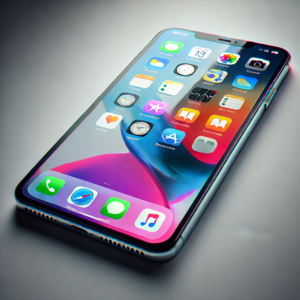President Trump Designates Bitcoin and Four Other Cryptocurrencies as Strategic Assets
On March 2 (local time), U.S. President Donald Trump officially announced that the United States would stockpile five cryptocurrencies, including Bitcoin, as strategic national assets. Through Truth Social, President Trump stated, “I will make America the global capital of digital assets,” instructing officials to strategically accumulate Bitcoin (BTC), Ethereum (ETH), Ripple (XRP), Solana (SOL), and Cardano (ADA).
U.S. Government Recognizes Cryptocurrencies as Strategic Assets

In January, President Trump signed an executive order to establish a working group responsible for managing and accumulating cryptocurrency assets. However, this is the first time he has explicitly mentioned specific cryptocurrencies. Analysts believe that this move could elevate cryptocurrencies to the same status as gold and oil as key strategic assets.
Forbes noted that “this announcement signifies that U.S. authorities now view cryptocurrencies as legitimate financial instruments capable of strengthening the national economy and security.” Previously, cryptocurrencies were not widely accepted as official assets due to their volatility and regulatory uncertainty. This recognition marks a shift toward positioning cryptocurrencies as essential tools within the U.S. economic framework, similar to oil and gold.
President Trump’s Shift in Stance
During his first term, President Trump was highly critical of cryptocurrencies, calling them a “scam.” He expressed concerns that cryptocurrencies could compete with the U.S. dollar and was openly opposed to their adoption. However, his stance started shifting during his recent election campaign. In July 2023, Trump declared, “It will be my administration’s policy to accumulate all Bitcoin owned or acquired by the U.S. government as a strategic national asset.”
Market Response and Cryptocurrency Price Surge
Following President Trump’s announcement, the cryptocurrency market experienced a sharp rally:
- Bitcoin surged 10.38% to reach $94,482.
- Ethereum climbed 15.85% to $2,525.
- Ripple (XRP) and Solana (SOL) jumped 32% and 23%, respectively.
- Cardano (ADA) skyrocketed by over 65%.
According to cryptocurrency data analytics firm CoinGecko, the total market capitalization of cryptocurrencies surged by approximately $329 billion within three hours of Trump’s statement, reaching $3.24 trillion. With expectations of further government acquisitions, investor optimism has significantly increased.
Roles and Strategic Value of Cryptocurrencies
Forbes analyzed the roles of the five cryptocurrencies designated for strategic stockpiling by President Trump:
- Bitcoin (BTC): Functions as a digital safe-haven asset, similar to gold.
- Ethereum (ETH): Key to innovation through smart contracts.
- Ripple (XRP): Revolutionizes global remittance and payment systems.
- Solana (SOL): Offers high-speed transactions and scalability.
- Cardano (ADA): Strengthens identity verification and decentralized networks.
Additionally, the U.S. government sees potential in using cryptocurrencies to reinforce the dollar’s dominance in the global financial system. The rise of stablecoins—cryptocurrencies pegged to the U.S. dollar—has alleviated concerns that digital assets could undermine the dollar. Instead, stablecoins are increasingly being seen as a tool to integrate cryptocurrencies into the dollar-based financial system, potentially strengthening U.S. monetary influence. Lucrezia Reichlin, an economics professor at the London School of Economics, stated, “Stablecoins could serve as a means of international trade settlement and global reserves, indirectly reinforcing the superiority of the U.S. dollar.”
Congressional Approval Required
To officially classify cryptocurrencies as strategic assets alongside gold, oil, and foreign currency reserves, approval from the U.S. Congress is necessary. Currently, the Senate is reviewing the ‘Bitcoin Reserve Bill’, introduced by Senator Cynthia Lummis (R-WY). This legislation proposes that the U.S. Treasury acquire 1 million Bitcoin over five years and hold them for at least 20 years. A similar bill was introduced last year but was shelved due to the expiration of the legislative session.
Future Outlook
President Trump’s decision is expected to have significant implications not only for the cryptocurrency market but also for the global financial landscape. If the U.S. government moves forward with large-scale cryptocurrency stockpiling, the role of digital assets in the global financial system will likely expand. However, challenges such as congressional approval and regulatory concerns remain.
If the Trump administration unveils a concrete acquisition plan, cryptocurrency prices could see further gains. However, regulatory uncertainties and political factors may also contribute to market volatility. The direction of U.S. government policies and congressional decisions will play a crucial role in shaping the future of the cryptocurrency market.


























